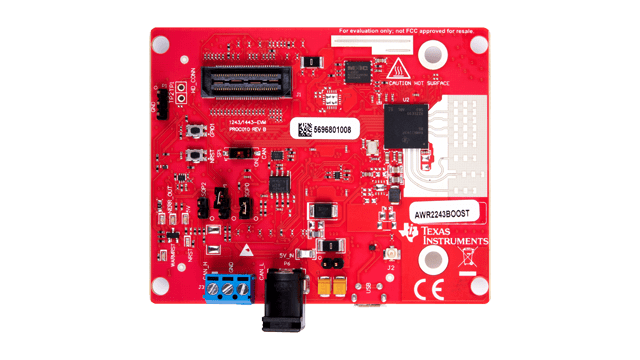
mmWave Sensors And Modules Market Report

Millimeter waveband refers to the subset of microwave or radio wave spectrum band that comes under the broad segment of wireless data transmission. Millimeter-wave radios do not require very big antennas, and are much smaller than Wi-Fi and other types of wireless connectivity technologies. The latest scope of the global millimeter waves technology market includes sensors as well as modules like satellite communication systems, telecommunication equipment and radar communication systems.
mmWave sensors and modules find extensive use in virtual reality devices, providing HD audio as well as video transmission. Given the requirement for small-sized components, the technology is used in mobile devices to induce extremely secure transmission of data. The mounting demand for high-speed data in mobile phones as well as mobile broadband, high- definition multimedia, over-the-top (OTT) services and high-definition gaming can boost the demand for mmWave sensor and modules in the coming years.
What are mmWave Sensors?
mmWave sensors are used for transmitting signals at a wavelength falling in the millimeter (mm) range. This is quite a short wavelength within the electromagnetic spectrum, which acts as a significant advantage of the technology. In addition, the system components’ size including as antenna needed for processing mmWave signals is tiny. Another significant benefit of short wavelengths includes a high resolution, which drives the demand for mmWave sensors and modules across the globe.
mmWave sensors are highly popular because of the following reasons:
- Huge absolute bandwidths.
- MmWave can be easily focused and steered with the use of standard optical techniques.
- The technology is highly directional.
- The technology has the ability to penetrate any type of materials, including drywall, clothing, and plastic.
The global mmWave sensor and module market has been segmented based on frequency band, application, and region. The proliferation of mmWave sensors in consumer electronics and increasing demand for millimeter wave technology in radar and security applications are the key factors that aid market growth.
By frequency band, the market has been segmented into band between 30 GHz and 57 GHz, band between 57 GHz and 96 GHz, and band between 96 GHz and 300 GHz. Among the frequency bands, 30 GHz and 57 GHz segment dominated the market in 2018. The bands 37GHz, 39GHz, and 47GHz offer the largest amount of spectrum available for flexible wireless services in the mmWave bands. The 39GHz band consists of 1400MHz contiguous, mmWave spectrum from 38.6 to 40 GHz. Existing licenses in the 39 GHz band consist of unpaired 50 MHz blocks licensed by Rectangular Service Area (RSA) or Partial Economic Area (PEA). The combination of upper 37GHz and 39GHz band provides the largest amount of contiguous spectrum, offering an opportunity for 5G deployment. This segment is also expected to show the highest CAGR during the forecast period.
By application, the market has been segmented into IT & telecommunication, automotive & aerospace, healthcare, consumer & commercial, government & defense, and transportation. Advances in wireless communication technologies have paved the way for the widespread use of mmWave to address the challenges of lower frequency and high-speed communications. Mobile users require high-speed data transfer rates and more reliable services and the next generation (5G) wireless networks have the potential to deliver the same. Uses of the mmWave bands include point-to-point communications, inter-satellite links, and point-to-multipoint communications. The 71–76, 81–86, and 92–95 GHz bands are used for point-to-point high-bandwidth communication links. As the development and adoption of 5G complete, the mmWave sensors and modules are expected to show a higher rate of adoption in the IT & telecom sector.
More Information@
About Market Research Future:
At Market Research Future (MRFR), we enable our customers to unravel the complexity of various industries through our Cooked Research Reports (CRR), Half-Cooked Research Reports (HCRR), Raw Research Reports (3R), Continuous-Feed Research (CFR), and Market Research and Consulting Services.
Contact:
Market Research Future
+1 646 845 9312
Email: [email protected]























